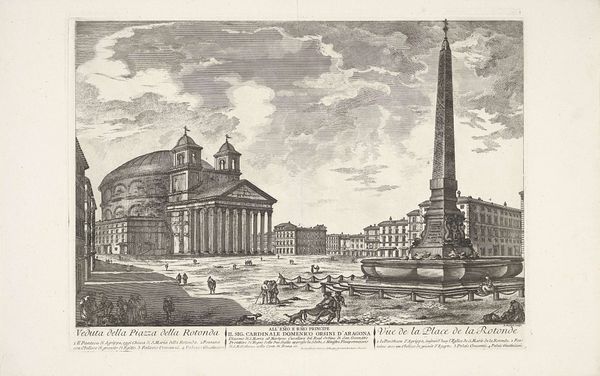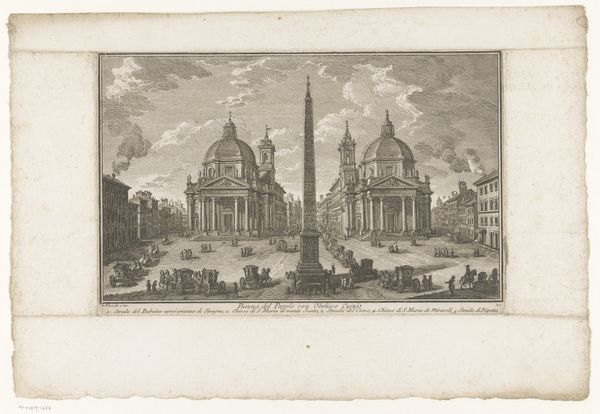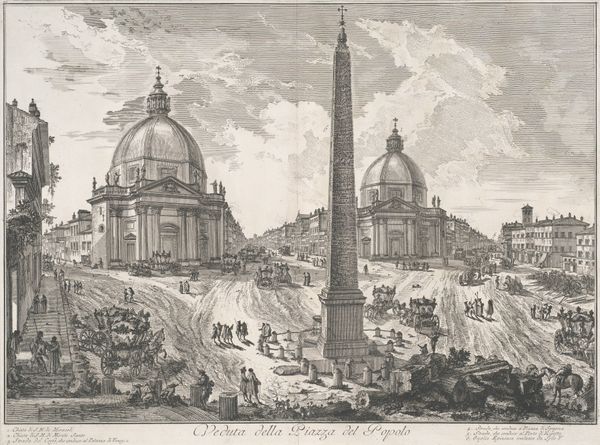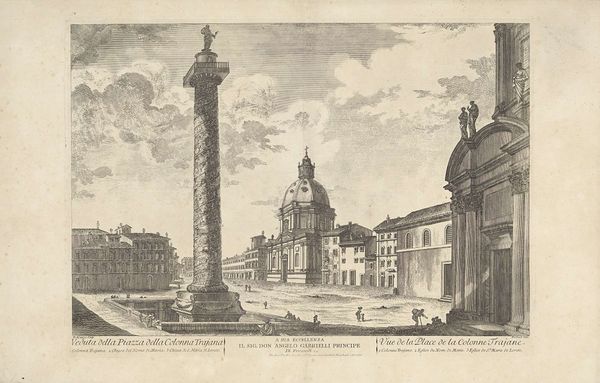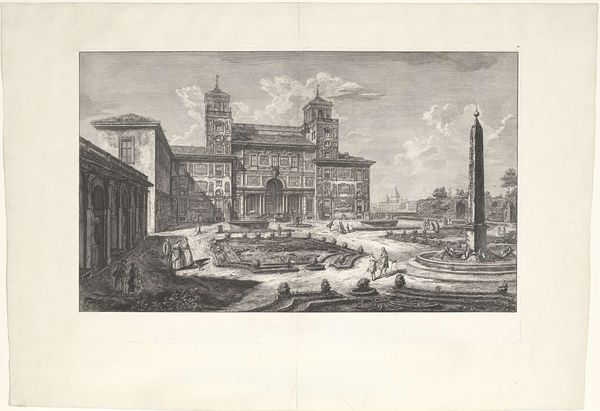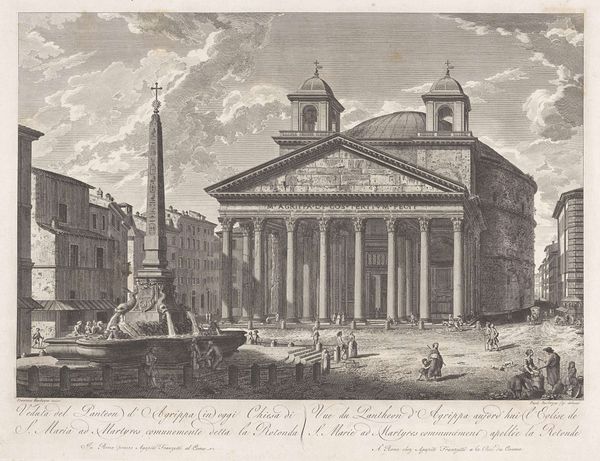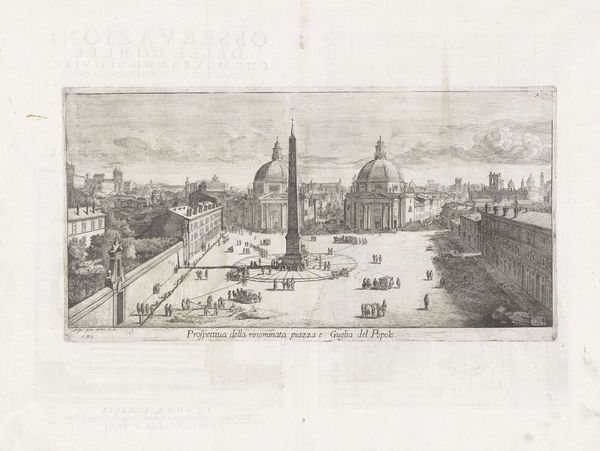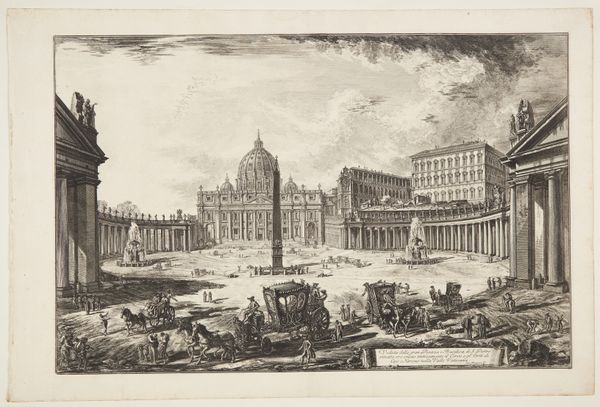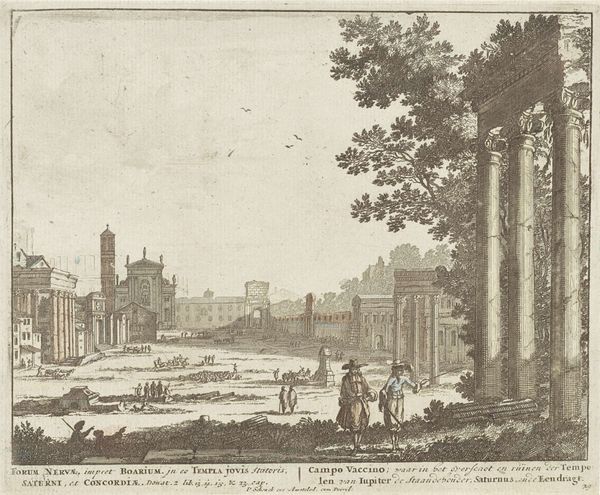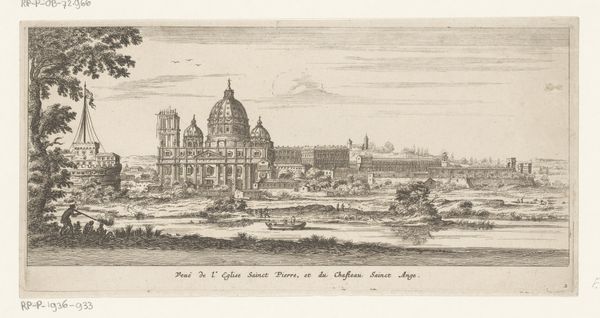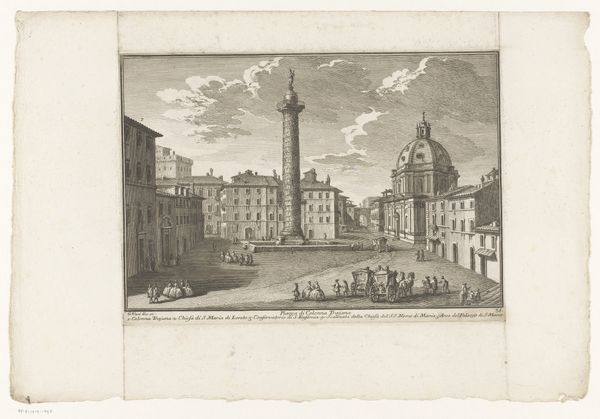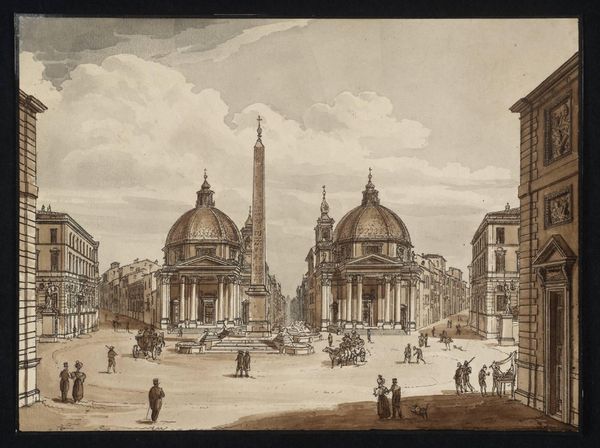
print, engraving, architecture
# print
#
old engraving style
#
classical-realism
#
perspective
#
cityscape
#
italian-renaissance
#
engraving
#
architecture
Dimensions: height 395 mm, width 534 mm
Copyright: Rijks Museum: Open Domain
Editor: So, this is Domenico Montaigu's "Piazza del Popolo te Rome," an engraving from the late 18th century. I’m immediately struck by the detail; it almost feels photographic despite being made by hand. What can you tell me about it? Curator: Looking at the image through a materialist lens, it's crucial to consider the labour involved in producing such a detailed engraving. Think about the craftsman meticulously carving the lines into the printing plate. Each line represents a conscious decision, a deliberate act of labor. How do you think the consumption of these images shaped the perception of Rome for those who couldn't travel there? Editor: That's a great point! It would’ve offered a glimpse of Rome to the masses, especially to those unable to visit. Were these prints considered art or more like a form of documentation at the time? Curator: That's a blurry distinction, and a great question! I wonder how Montaigu himself positioned this work. Was it intended for an elite art market or broader public consumption? The architectural details, carefully rendered, suggest a practical function – perhaps to showcase Rome's urban planning and architectural prowess. But the inclusion of figures gives us a view of everyday life, indicating a possible goal of documenting the human experience alongside the built environment. Editor: So, the material—the engraving itself—becomes a carrier of not just an image but also the context of its creation and intended audience? Curator: Precisely! And that context involves economic factors, social classes, the artist's role within that society, and the very process of how images were disseminated. It's a far cry from viewing art as solely the product of individual genius. It invites us to ponder how the means of production shapes the art and, subsequently, shapes the understanding of art itself. Editor: This has completely changed how I see this image. I was focusing on the composition and perspective, but now I see it as a product of labour and a tool for shaping perceptions of Rome. Thanks for illuminating that for me! Curator: My pleasure. And perhaps, by questioning traditional views, we allow a deeper appreciation of both art and the work, material, and consumption.
Comments
No comments
Be the first to comment and join the conversation on the ultimate creative platform.
